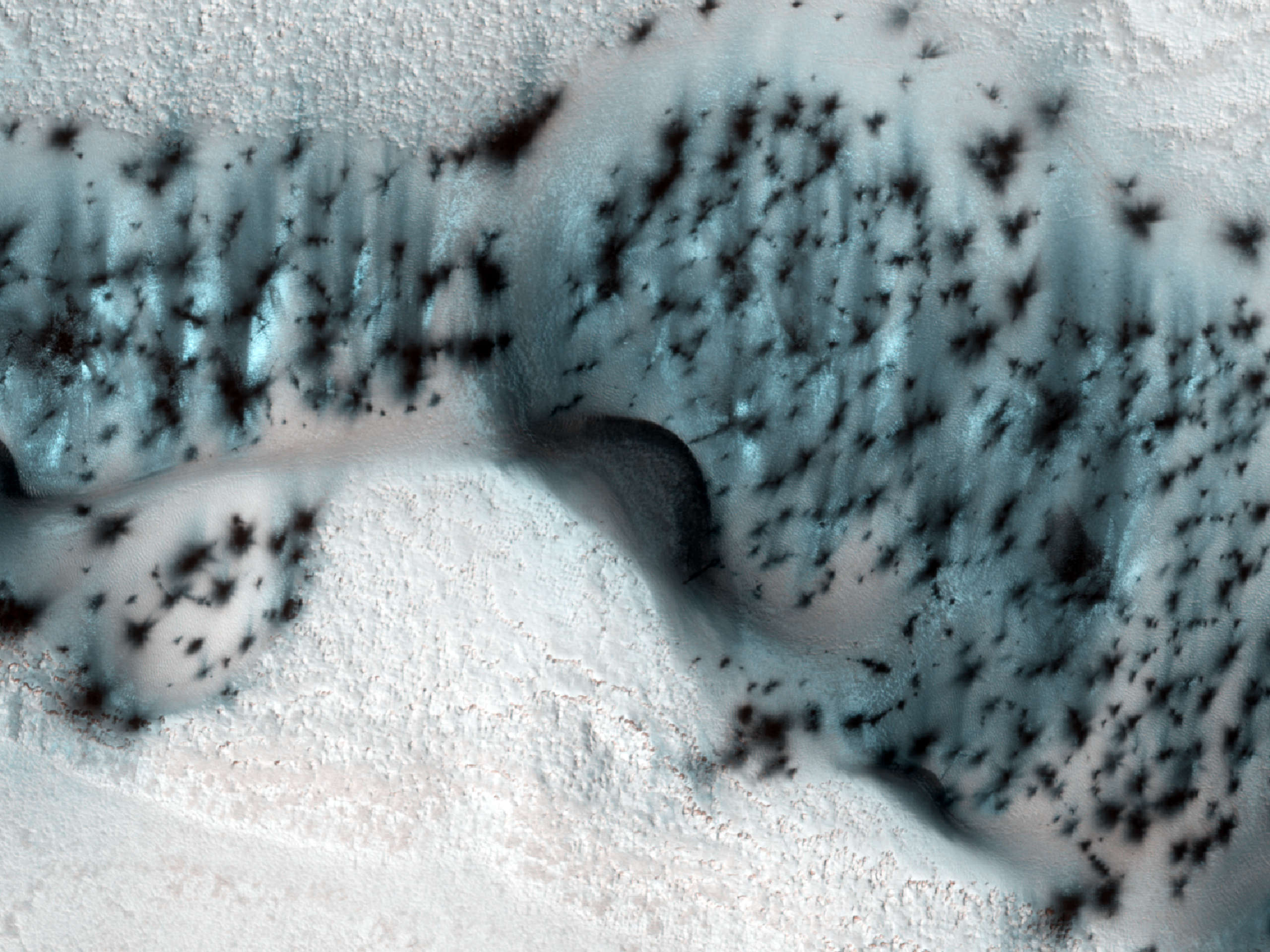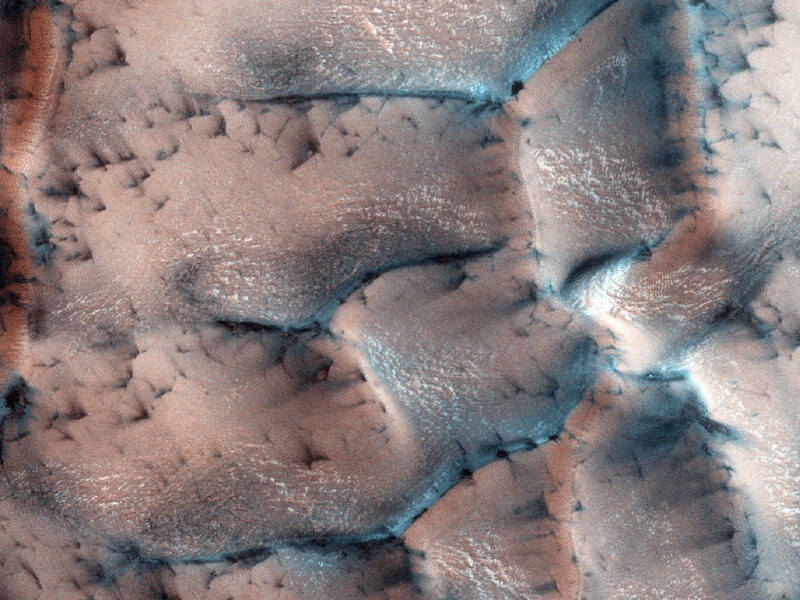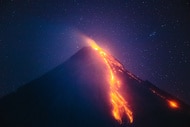Create a free profile to get unlimited access to exclusive videos, sweepstakes, and more!
Winter is coming on Mars, so how much carbon dioxide snow is it going to get?

The infamous Ned Stark meme strikes again, but this time, it isn’t about Earth or even a fictional universe on Earth. Mars is basking in summer right now, but remember what Stark said (before he lost his head): "Winter is coming."
Most Martian snow is actually the same frozen carbon dioxide we recognize as dry ice. While there is also water ice on the Red Planet, so much is CO2 in its solid state that it makes up most of the polar ice caps, and up to 7 feet of snow made of the same stuff can be expected every winter. Winter on Mars can actually tell us more about how the planet undergoes seasonal changes, such as its ice caps growing when it becomes a freezer, and receding later on.
So what can Martian ice caps reveal about what happens to the planet during a deep freeze and throughout the summer? An international team of researchers, led by Haifeng Xiao of the Institute of Geodesy and Geoinformation Science at Berlin Technical University, have recently posted a study on its unusual snow and ice using the preprint server arXiv.
“For the snow to form from the clouds, carbon dioxide requires something around to condense — for instance, a small silicate or dust particle,” Xiao tells SYFY WIRE. “During the sublimation phase of the seasonal polar caps during spring, atmospheric warming associated with dust storm activity can speed up the thinning process.”
To get an idea of how much CO2 snow and ice is found on Mars during different times of year — remember that a Martian orbit and therefore year is twice as long as Earth’s — Xiao used data from the Mars Orbiter Laser Altimeter (MOLA) aboard the Mars Global Surveyor (MGS). MOLA measures how high the ice caps are, along with their volume, to determine how much ice accumulates and sublimates (goes straight from a solid to a vapor). Putting this data into a Digital Terrain Model (DTM) gave the team an average surface measurement of snow.
There are other weather phenomena that can influence CO2 snowfall and vaporization on Mars. The dust in Martian snowfalls lowers albedo, or the ability to reflect sunlight, and much like Winterfell, more snow remains in the north through the spring and summer because there are more dust particles for that snow to form around. That results in sunlight bouncing off snow and ice on the surface and back into space. While other studies had resulted in measurement errors, Xiao found that using both MOLA data and a DTM resulted in much more accuracy.
“To overcome previous issues, we utilized the height corrections from co-registering specific MOLA profile segments to an underlying DTM as a new approach, and a new post-correction procedure was also used for this purpose,” he says.
Not surprisingly, the deepest snow and ice can be expected at the poles, especially the south pole; the poles are most sensitive to changes in climate. Sublimation leads to strange formations like spidery araneiforms. Xiao’s team will use their combined MOLA and DTM approach to study the polar regions in more detail as they continue their research on how the polar ice caps and CO2 snow and ice in general keep evolving on Mars. Their research could be the basis for pointing out anything suspicious in future observations with even more powerful instruments.
Throughout a year on Mars, which is 687 Earth days, atmospheric pressure will plunge, because the accumulation of snow and ice does away with about 30% of whatever is left of the planet’s nearly nonexistent atmosphere. The long-dead Viking landers have actually helped prove this. Pressure in the atmosphere will rise and fall throughout the year in the landers’ final resting places, and these fluctuations are consistent with the growth and shrinking of ice caps.
Xiao’s colleague, planetary scientist Jingyan Hao, believes the cycle of condensation and sublimation could tell us more about the evolution of the Martian climate.
“If we can get a deeper understanding of how features such as araneiforms form and change, with seasonal polar ice caps varying under changing conditions, we will better understand the past and present climates and environments of Mars and how they evolved,” she says.
Just don’t expect Perseverance to start building a snowman anytime soon.















